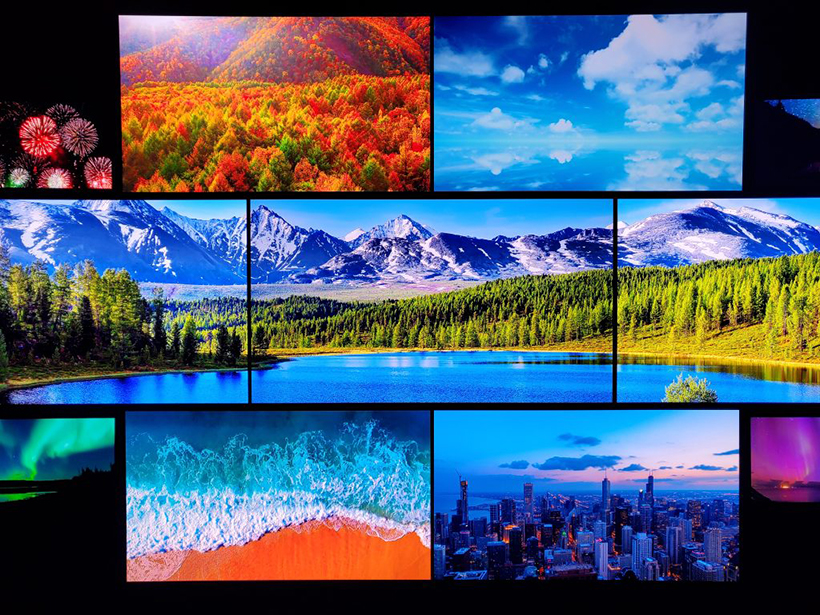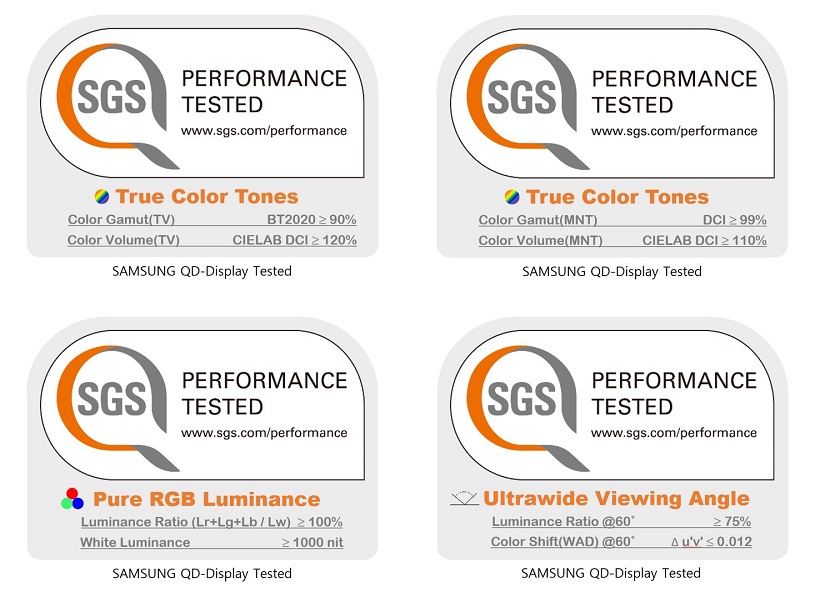As an industry leader in the premium display market, Samsung Display announced that its QD (Quantum Dot)-Display, the new standard for next-generation TV picture quality, was certified by SGS, a world-leading certification company.
The QD-Display, which Samsung Display began mass producing in November, received three certifications for its True Color Tones, Pure RGB Luminance and Ultrawide Viewing Angle – meaning the QD-Display is certified to accurately portray the true tone of all natural colors with a clear, bright screen at any viewing angle.
“As the video content industry, production technologies, platforms and communication infrastructures are rapidly growing, the demand for premium quality content is also quickly increasing,” says Ho Sun, the head of Strategic Marketing for Samsung Display’s Large Display Division. “QD-Display is the answer to meeting this demand and offers consumers a new standard for viewing high-quality content at the highest picture quality”

The QD-Display received the True Color Tones certification through SGS evaluation. Based on BT.2020[1], the newest color range standard released by the International Telecommunication Union (ITU), the color gamut (or range of color that can be expressed at a specific luminance) is 90% or greater than those in existing display technologies. Based on DCI-P3[2], the color volume (or range of color that can be expressed according to the brightness and darkness levels of the screen) reaches 120% of the criteria.

“The color gamut of existing TV displays hardly ever exceeds 70% when applying the BT.2020 standard, and based on DCI-P3 standards, color volume usually falls under 100%,” explained Samsung Display. “QD-Display outperforms in both categories, with superior quality that can vibrantly and accurately display colors across the spectrum.”
The Pure RGB Luminance certification highlights the QD-Display’s accurate and precise expression of RGB (red, green and blue) primary colors without compensating luminance. This certification is given when the sum of the luminance of each RGB prime color is equivalent to or higher than the luminance value of the white color created by the RGB combination. The QD-Display’s luminance of white is 1,000 nits, and the combined figure of the luminance of each RGB was evaluated to be equivalent.
For displays that have added white pixel to increase luminance, the total luminance of each RGB usually falls around 50% of the white luminance, which leads to an inaccurate expression of the RGB and may appear darker on the screen.
Additionally, the QD-Display obtained the Ultrawide Viewing Angle certification through analysis of the display’s picture quality in any position with multiple viewers. Based on Samsung Display’s internal evaluation, when viewing a 65-inch TV from a 60-degree angle, the QD-Display maintained more than 80% of the frontal luminance, whereas WOLED and LCD displays of the same size dropped to 53% and 35%.
According to Samsung Display, “Typically, there are differences in color or luminance depending on your viewing position since light travels in straight lines. With quantum dots’ optical properties and ability to disperse light widely like a dome shape, QD-Displays reduce image quality degradation, so you can enjoy content as if you’re sitting front and center at any angle.”
As Samsung Display continues to mass produce the QD-Display, it’s working with a number of customers around the world to bring the display to market with innovative products launching in 2022 and beyond.
[1] BT.2020 (also abbreviated as Rec.2020) specifies parameter values for ultra-high definition television systems for production and international programme exchange.
[2] DCI-P3 is the color gamut defined by DCI (Digital Cinema Initiatives) for digital cinema projectors.

